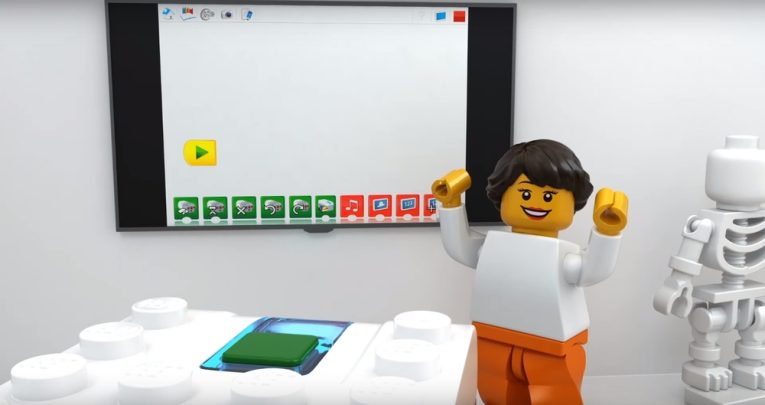LEGO Education Resources In Action – One Teacher’s Story

Primary teacher Stuart Swann recalls how LEGO Education materials have assisted him and his pupils over nearly two decades…

- by Teachwire
- Classroom expertise and free resources for teachers

How long have you been using LEGO Education materials? I’ve used LEGO Education products in my teaching for 18 years, beginning with MINDSTORMS RCX in my Y5 class in 1996. While working for Greenwich Local Authority as a City Learning Centre Manager from 2002 to 2011 I worked extensively with RCX and NXT; I headed up the borough’s LEGO Education Centre, which extended the products we used to include Machines & Mechanisms. What are the top concerns teachers face when it comes to implementing standards? In my experience, teachers across the key stages are under enormous amounts of pressure to get their pupils to a recognised, specified standard at the end of each phase of their school lives. Unfortunately, this has led to the gradual removal of cross-curricular learning and of enquiry-based, pupil-led challenge within our schools.
I believe that schools can, and need to make the learning journey of their children as enriching, challenging, engaging, creative and enjoyable as possible. If we simply ‘teach to the test’, our children will miss out on all that a broad and balanced education has to offer.
This is a challenge in some areas and for many schools, for lots of different reasons. However, if schools can manage this – and in my experience, many wish to – they will see a transformation in their children and staff.
This is where I see tools such as LEGO Education resources having a huge impact, which brings me on to quality of resources and budgeting. Teachers will naturally look to purchase resources that have longevity as well as relevance. They are looking for tools that are easy to implement, come with high quality teaching resources and which will engage their learners in a wide range of curriculum areas, whist having a positive impact on standards.
How do LEGO Education solutions address those concerns?
The materials are accessible and familiar to all ages. They provide a great opportunity to access a wide range of curriculum subjects through play and collaboration.
We know, as teachers, that if pupils are engaged, if they are challenged to solve problems independently, if they are encouraged to collaborate, to take risks and if they are having fun, that they will learn more and learn better.
LEGO Education products encourage this type of learning from a very young age all the way through school and beyond. The educational theories of Piaget and Papert (of constructivism and learning by doing) are borne out every time I see a group of pupils using LEGO Education tools.
The support materials that accompany the kits are well written and are aligned to current curriculum standards and requirements without being too prescriptive. This means that teachers have the flexibility to use the products not only in the core subject areas but also across the wider curriculum.
An example of this would be LEGO Education WeDo. The activities, and the very nature of the kit, address the requirements of the programming aspect of the Computing Curriculum at Key Stages 1 and 2.
However, we are expected to deliver this new curriculum contextually. WeDo allows for this to happen seamlessly by focusing the activities on science, technology, mathematics, humanities and literacy. The programming is therefore covered in the context of the wider curriculum, meaning that core curriculum standards are being impacted upon through creative, engaging and fun activities.
Because the resources can be used across a range of subjects, and because the support materials contain a host of lesson plans and ideas, LEGO Education resources need not spend most of their time unused in a cupboard.
Teachers often cite the price of LEGO as something that is prohibitive. However, once they see and understand how the resources can be used across all year groups and subject areas, they realise that it is a long-term investment and actually very good value for money! How are LEGO Education solutions an appropriate resource for implementing standards in core subjects – maths, literacy, science? The resources and supporting materials written for StoryStarter, MoreToMaths, Early Simple Machines, Simple Machines and Machines & Mechanisms (including the pneumatic and renewable energy add-on packs) directly address the requirements of the National Curriculum and provide solutions and activities to meet these standards.
The engagement that pupils have when using LEGO is tangible. As I said before, a child who is engaged and excited by the learning process will naturally learn more and achieve ’better’ results as a consequence.
A good example here is how StoryStarter can be used to engage and develop reluctant writers though building individual scenes up to five-part stories. Not only that, but the same tool can be just as effectively used to extend and develop strong writers through helping them to realise their imagination through physical models. What are the unique aspects of LEGO Education solutions? [The education professor] Leo Buscaglia once said, “It is paradoxical that many educators and parents still differentiate between a time for learning and a time for play without seeing the vital connection between them.”
LEGO Education solutions work on all levels. From a pupil perspective they are fun, engaging and creative. The students will learn and develop key concepts through play and collaboration. Teachers are secure in the understanding that they are delivering a wide range of curriculum requirements, supported by detailed and well researched lesson plans and ideas, which also provide self, peer and teacher assessment opportunities.
I have worked with hundreds of children and trained hundreds of teachers using LEGO Education products and I can honestly say that it never fails. Even the harshest critics at the start of a training session have approached me when we have finished to say how much they enjoyed the training and – most importantly – how much value they now saw in the products.
As a Certified Trainer, and someone who has visited Billund in order to gain my certification, I know the value that LEGO places on education. I understand the educational philosophy which goes into creating and developing each and every product, and this is incredibly important.
The LEGO Education brand is not simply a way to sell more LEGO. They ’get it’, and that’s what counts.
Stuart Swann is a primary teacher, educational consultant (computing) and LEGO Education Academy Certified Trainer (STEM & HUSO)










